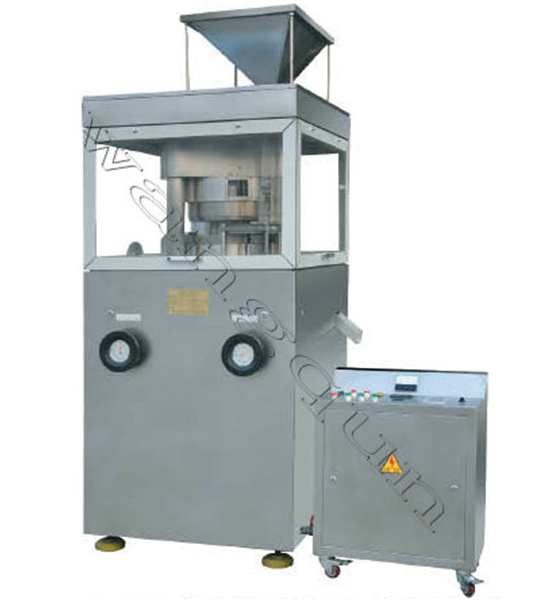How to Maintain a Large tonnage tablet press for Optimal Performance
Maintaining a large tonnage tablet press is essential for high-efficiency tablet production, ensuring consistent tablet quality, extended equipment life, and compliance with environmental and safety standards. This guide provides a comprehensive overview of product features, environmental compliance, practical application examples, and transportation precautions, helping manufacturers optimize their operations.
Table of Contents
Introduction
Product Overview of Large Tonnage Tablet Press
Environmental and Safety Standards Compliance
Daily and Preventive Maintenance
Application Cases in Pharmaceutical and Industrial Settings
Transportation and Handling Guidelines
Conclusion
1. Introduction
A large tonnage tablet press is designed for high-capacity tablet manufacturing, capable of producing pharmaceutical, disinfectant, water treatment, and chemical tablets. Despite its robust design, improper maintenance can lead to issues such as:
Uneven tablet weight and thickness
Sticking or cracking of tablets
Reduced productivity and downtime
Excessive energy consumption
Maintaining the press effectively ensures consistent performance, operational efficiency, and regulatory compliance.
2. Product Overview of Large Tonnage Tablet Press
Large tonnage tablet presses are equipped with high-capacity compression systems, advanced control panels, and multi-station turrets. Key features include:
| Feature | Description | Benefit |
|---|
| High Compression Force | Adjustable up to several tons | Produces dense and uniform tablets |
| Multi-Station Turret | 8–16 station options | Increases production capacity |
| Automated Control Panel | PLC system with touch screen | Precise tablet weight and thickness control |
| Durable Dies and Punches | High-grade stainless steel | Long service life and reduced wear |
| Safety Features | Emergency stops, interlocks | Protects operators and prevents accidents |
These presses are ideal for large-scale pharmaceutical, chemical, and industrial production, where quality and efficiency are critical.

3. Environmental and Safety Standards Compliance
Maintaining a tablet press also involves adhering to environmental and safety standards, including:
3.1 Environmental Compliance
Dust and particulate control: Install local exhaust ventilation systems to reduce powder contamination.
Energy efficiency: Optimize motor settings and compression cycles to lower energy consumption.
Waste management: Proper disposal of worn punches, dies, and lubricants.
3.2 Safety Standards
Emergency stop systems: Regularly test all stop switches and interlocks.
Operator training: Ensure staff are trained in safe operation and emergency procedures.
Protective equipment: Operators should wear gloves, masks, and eye protection when handling powders.
Compliance with GMP, ISO, and OSHA standards ensures safe and environmentally responsible operation.
4. Daily and Preventive Maintenance
Regular maintenance is key to extending the lifespan and maintaining optimal performance.
4.1 Daily Maintenance Tasks
Clean hopper, feeder, turret, punches, and dies
Lubricate moving components such as cams and spindles
Check control panel and emergency stop functionality
Verify powder flow and compression settings
4.2 Weekly Maintenance Tasks
Inspect turret alignment and tighten bolts
Check compression system for wear and tear
Inspect electrical connections and sensors
4.3 Monthly Maintenance Tasks
Calibrate control system and sensor accuracy
Replace worn punches or dies
Conduct vibration and noise analysis
Inspect lubrication and hydraulic systems
4.4 Maintenance Checklist
| Task | Frequency | Purpose |
|---|
| Lubricate moving parts | Daily | Reduce wear and friction |
| Clean powder residues | Daily | Prevent sticking and contamination |
| Inspect alignment | Weekly | Ensure uniform tablet compression |
| Calibrate sensors | Monthly | Maintain precise tablet weight |
| Replace worn components | As needed | Maintain tablet quality and efficiency |
5. Application Cases in Pharmaceutical and Industrial Settings
5.1 Pharmaceutical Industry
A pharmaceutical company used a large tonnage tablet press to produce antiviral and disinfectant tablets. By following a structured maintenance routine:
Tablet uniformity improved by 12%
Downtime was reduced by 25%
Energy consumption decreased by 15%
5.2 Industrial Chemical Production
An industrial manufacturer used the press for water treatment and chemical tablets. Regular preventive maintenance and lubrication:
Extended the service life of punches and dies
Maintained high compression quality
Reduced production waste and rejected tablets
5.3 Key Takeaways from Application Cases
Structured maintenance schedules improve tablet consistency
Environmental compliance reduces operator exposure and contamination
Early detection of wear prevents costly downtime
6. Transportation and Handling Guidelines
Safe transportation and handling of a large tonnage tablet press are crucial to prevent damage and ensure operational readiness.
6.1 Pre-Transport Preparation
6.2 Handling Tips
Use forklifts or cranes with proper weight capacity
Avoid sudden jolts or tilting during movement
Ensure leveling at the installation site before setup
6.3 Post-Transport Checks
Inspect for loose bolts or damaged components
Test control panel and safety features
Conduct trial runs with light powder load
Following these steps prevents misalignment, damage, and operational failure after transportation.
7. Conclusion
Proper maintenance, environmental compliance, and careful handling of a large tonnage tablet press are essential for achieving optimal performance, consistent tablet quality, and long-term reliability. By implementing:
Structured daily, weekly, and monthly maintenance
Environmental and safety standards compliance
Careful transportation and setup procedures
Lessons from real-world application cases
Manufacturers can maximize productivity, reduce downtime, and extend equipment life, while maintaining GMP and industry compliance. A well-maintained tablet press ensures efficient, safe, and high-quality tablet production for pharmaceutical, chemical, and industrial applications.











 Phone
Phone
Comment
(0)